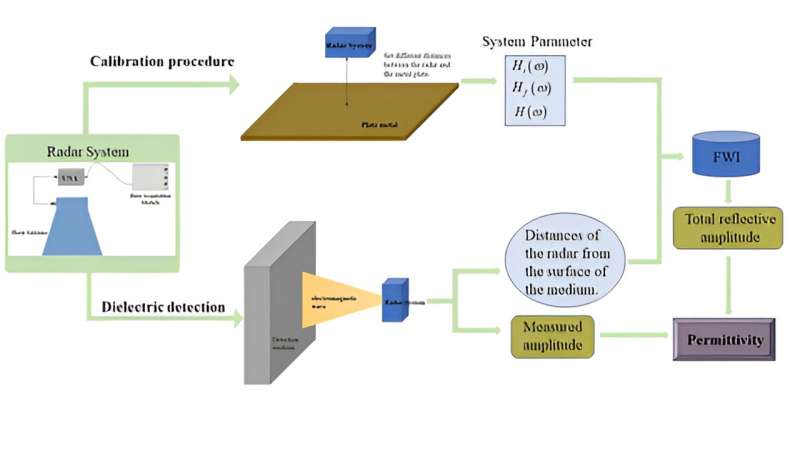This article has been reviewed according to Science X's editorial process and policies. Editors have highlighted the following attributes while ensuring the content's credibility:
fact-checked
trusted source
proofread
Study proposes real-time permittivity estimation method for stepped-frequency ground-penetrating radar

Ground-penetrating radar (GPR) has long been a pivotal tool in estimating the permittivity of various mediums. An important technique used in this estimation is the radar echo amplitude method, which crucially derives permittivity magnitude from the correlation between reflection coefficients and permittivity.
Building upon this principle, a recent study published in Remote Sensing introduced a full-wave inversion real-time permittivity estimation method specifically tailored for stepped-frequency GPR (SFGPR). The study was conducted by a research team from the Key Laboratory of Electromagnetic Radiation and Sensing Technology, the Aerospace Information Research Institute of the Chinese Academy of Sciences.
This method exhibits remarkable efficiency, accuracy, and adaptability. Its key aspects focus on leveraging the SFGPR system and implementing a layered media detection model, enabling precise waveform compensation optimization.
The distance between the antenna and the reflective medium's surface is extracted directly from the time domain waveform, circumventing potential errors associated with manual measurements. The method conducts the inversion of the total reflection waveform based on electromagnetic field principles, eliminating the need for repetitive metal plate calibration experiments, and enhancing both work efficiency and waveform accuracy.
In a continuous measurement line, it efficiently completes total reflection waveform inversions at each measurement point, thereby discerning changes in permittivity along the measurement line.
To validate the efficacy of this method, experiments were conducted on a known wall thickness. The permittivity estimation was closely aligned with those obtained from dielectric probes, physical model calculations, and wall penetration. In addition, the method was applied to analyze the dielectric properties of adobe samples.
The results underscored the method's potential in comprehending the condition of measured mediums, ensuring detection accuracy, and enhancing subsequent data processing efficiency.
This method holds promise for the applications in various fields including geology, material analysis and archaeological studies.
More information: Xu Li et al, A Real-Time Permittivity Estimation Method for Stepped-Frequency Ground-Penetrating Radar by Full-Waveform Inversion, Remote Sensing (2023). DOI: 10.3390/rs15215188



















